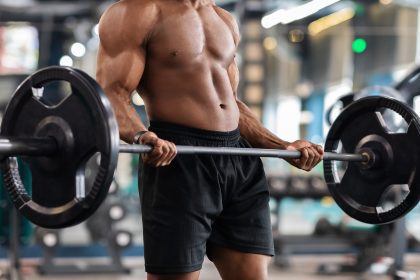The squat ranks among the most natural human movements, yet modern lifestyles have largely eliminated it from daily routines. This fundamental motion—lowering your body by bending your knees while keeping your back straight—appears simple but triggers profound physiological responses throughout the body. While commonly associated with leg development, squats actually create whole-body adaptations that extend far beyond muscle growth. This comprehensive analysis reveals the lesser-known benefits of regular squatting that might motivate even the most resistance-training-averse individuals to incorporate this movement into their fitness regimen.
The metabolic furnace effect
When performed properly, squats activate the largest muscle groups in the body simultaneously. This coordinated muscle recruitment creates a metabolic response that continues long after the exercise ends. Unlike isolated movements that target smaller muscles, squatting engages the quadriceps, hamstrings, gluteals, erector spinae, and core muscles in a synchronized pattern.
This synchronized activation triggers a cascade of hormonal responses that elevate the basal metabolic rate for up to 72 hours following a challenging squat session. During this extended period, the body consumes additional calories to repair microscopic muscle damage and restore energy reserves depleted during the exercise.
The increased metabolic activity extends to non-exercise hours, including sleep. Research demonstrates that individuals who perform regular squat sessions burn an average of 15% more calories during rest periods compared to those who focus on cardio-only exercise programs. This metabolic enhancement occurs because maintaining muscle tissue requires substantially more energy than maintaining fat tissue.
For optimal metabolic effects, performing squats twice weekly with appropriate resistance creates the ideal balance between stimulus and recovery. The body continuously adapts to the training demand during rest periods, establishing a higher baseline metabolic rate that persists even when not actively exercising.
The posture restoration mechanism
Modern life involves excessive sitting that creates predictable postural imbalances—particularly anterior pelvic tilt, rounded shoulders, and forward head position. Proper squatting directly counteracts these patterns by strengthening the precise muscles that become elongated and weakened during prolonged sitting.
The gluteal muscles, particularly the gluteus medius and minimus, reactivate during squatting after becoming dormant through sedentary behavior. These muscles play critical roles in pelvic stabilization during walking and standing. Their renewed strength translates immediately to improved standing posture and reduced lower back strain.
The deep core stabilizers, including the transverse abdominis and multifidus, engage isometrically throughout the squat movement to maintain spinal alignment. This constant tension teaches these muscles to provide ongoing postural support during daily activities, reducing the likelihood of stress-related back pain.
For individuals with desk jobs, performing even bodyweight squats daily creates a protective effect against the postural deterioration associated with prolonged sitting. The movement essentially resets the musculoskeletal system to its natural alignment, counteracting the hours spent in compromised positions.
The bone density building response
Unlike cardiovascular exercises that primarily stress the heart and lungs, squats create mechanical loading that stimulates bone remodeling. This process involves specialized cells called osteoblasts depositing new bone material in response to the compressive forces experienced during squatting.
The vertebrae of the spine, pelvis, and femur receive the greatest stimulus during squatting, which coincidentally represent the most common fracture sites in age-related bone density loss. The compressive forces generated during squatting far exceed those experienced during daily activities, providing a stimulus threshold that triggers adaptive bone strengthening.
The bone density improvements begin approximately 8-12 weeks after initiating a regular squatting routine and continue progressively with consistent training. These adaptations create structural changes that persist long-term, unlike the cardiovascular benefits of exercise that diminish rapidly with inactivity.
For women approaching or experiencing menopause, squatting offers particular benefits as estrogen decline accelerates bone density loss. The mechanical loading provided through regular squatting partially compensates for the reduced hormonal support of bone health, potentially reducing fracture risk by up to 40% compared to sedentary individuals.
The joint nutrition enhancement
Contrary to popular misconceptions about squats damaging knees, properly performed squats actually improve joint health through increased synovial fluid circulation. This nutrient-rich fluid cannot rely on the cardiovascular system for distribution since joint cartilage lacks blood vessels.
During squatting, the changing pressures within the joint capsule create a pumping effect that circulates synovial fluid, delivering nutrients to cartilage and removing metabolic waste products. This enhanced circulation improves cartilage health and resilience against everyday wear.
The supporting ligaments and tendons around the knees, hips, and ankles also benefit from the controlled stress of squatting. These connective tissues adapt by becoming stronger and more pliable, improving their ability to stabilize joints during unexpected movements that might otherwise cause injury.
For aging individuals concerned about joint health, maintaining a regular squatting practice with appropriate depth and resistance provides protective effects against degenerative changes. The movement maintains range of motion that might otherwise diminish through disuse, preserving functional mobility into later decades.
The hormonal optimization trigger
Perhaps the most surprising benefit of regular squatting involves its effects on hormonal balance. The intensity and whole-body nature of the movement stimulates the release of growth hormone and testosterone in both men and women, though in different proportions.
These anabolic hormones play crucial roles beyond muscle development, influencing energy levels, cognitive function, mood regulation, and even sleep quality. The acute elevation following squatting contributes to cumulative improvements in overall hormonal profiles when practiced consistently.
Cortisol regulation also improves with regular squatting. While the exercise temporarily increases cortisol levels, the body adapts by becoming more efficient at returning to baseline afterward. This improved recovery capacity extends to other stressors, potentially reducing the negative health impacts of psychological stress.
For middle-aged adults experiencing age-related hormonal declines, twice-weekly squat sessions create measurable improvements in hormonal profiles within 12 weeks. These changes often correlate with subjective reports of increased energy, improved sleep quality, and enhanced mood stability.
The digestive improvement process
The compression and expansion of the abdominal cavity during squatting creates a mechanical massage effect on the internal organs, particularly those involved in digestion. This movement stimulates peristalsis—the wavelike contractions that move food through the digestive tract.
The increased intra-abdominal pressure momentarily slows venous return from the digestive organs, followed by enhanced blood flow when pressure normalizes. This fluctuation brings fresh nutrients and removes waste products more efficiently, supporting optimal digestive function.
The core engagement required during squatting also strengthens the muscles that support elimination. These often-neglected muscles play crucial roles in digestive health but rarely receive targeted exercise in modern fitness programs.
For individuals experiencing sluggish digestion, incorporating a brief set of bodyweight squats after meals can provide immediate relief while contributing to long-term improvements in digestive efficiency. The movement essentially assists the natural processes that modern sitting habits tend to impede.
The mobility restoration sequence
The squat movement requires and develops mobility in multiple joints simultaneously—ankles, knees, hips, and spine. This integrated mobility pattern mirrors the requirements of daily activities far more closely than isolated flexibility exercises.
The ankle dorsiflexion necessary for proper squatting directly transfers to walking mechanics, potentially reducing common compensations that lead to plantar fasciitis and shin splints. This improved ankle function creates a foundation for better movement patterns throughout the entire lower body.
Hip mobility, particularly in the often-restricted internal rotation pattern, improves steadily with regular squatting. This enhanced range of motion reduces stress on the lumbar spine during rotational movements, potentially decreasing the risk of disc-related injuries.
For active individuals seeking improved athletic performance, the mobility gained through proper squatting translates directly to enhanced movement efficiency in virtually all sports and activities. The movement essentially removes the physical restrictions that limit performance across numerous domains.
The neurological advancement phenomenon
The coordination required for proper squatting creates adaptations within the central nervous system that extend beyond the exercise itself. The brain develops enhanced motor control mappings that improve movement efficiency in all activities requiring lower body control.
The proprioceptive awareness—the sense of body position in space—sharpens considerably with squat training. This enhanced body awareness transfers to improved balance, more precise movement execution, and reduced fall risk, particularly in older adults.
The neurological adaptations occur more rapidly than the muscular changes, often becoming noticeable within 2-3 weeks of initiating regular squat training. These quick improvements provide motivational feedback that supports adherence to longer-term training programs.
For aging individuals concerned about cognitive health, the complex motor patterns involved in squatting stimulate neural pathways that support overall brain health. The mind-body connection strengthened through this fundamental movement contributes to maintaining cognitive function alongside physical capabilities.
The longevity foundation effect
The ability to lower oneself to the ground and return to standing independently serves as one of the strongest predictors of all-cause mortality in adults over 50. Regular squatting maintains precisely this capacity, potentially adding years of healthy, independent living.
The comprehensive strength developed through squatting supports the ability to recover from illness or injury more effectively. The physiological reserve created through regular resistance training provides resources the body can redirect toward healing when needed.
The functional transfer of squatting to daily activities—including sitting, standing, lifting, and climbing stairs—maintains independence in activities of daily living that determine quality of life in advancing years. This functional carryover represents perhaps the most meaningful long-term benefit of maintaining squatting ability throughout life.
For individuals of any age, squatting represents an investment in future capabilities and independence. The movement pattern acts as both a test and a training tool for the functional abilities that determine one’s capacity for active participation in life’s various demands and pleasures.
Incorporating squats into your exercise routine requires little equipment and minimal time, yet delivers these nine diverse benefits that span virtually every body system. Whether performed with bodyweight alone or additional resistance, the squat deserves its reputation as a fundamental movement pattern with transformative potential for overall health and function.

















